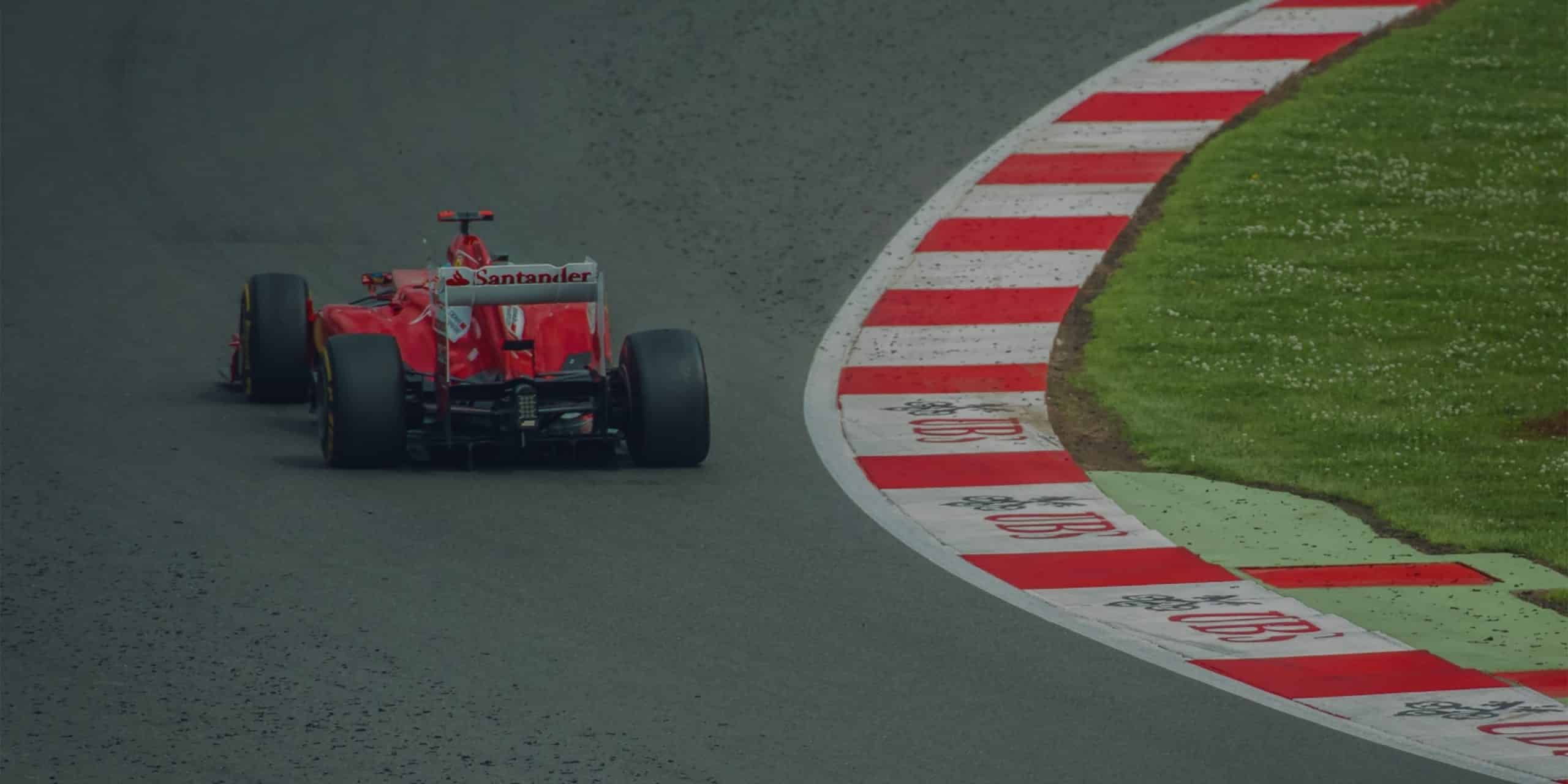Step aside F1. Make way for formula data
Motorsport Data 101
Motorsport data 101
Imagine this. An F1 driver roaring around a circuit at 200 mph, pulling more G forces than a fighter pilot. He notices his car loses power momentarily at the same point on the circuit during each of the laps he’s completed so far. Luckily for our driver, high speed data telemetry is pouring out of the car, detailing thousands of metrics on anything from suspension geometry to fuel hose temperature.
In the grizzlier days of Formula 1, the cars were described as fast coffins. Today, fast data generators is a more accurate description. The union of data and F1 has become close and all encompassing. From the pressure of the air rushing under the floor to the temperature of each tyre, thousands of data points a second are taken to capture as much as possible about the state of the car as it races around a circuit.
So here are five – or more appropriately 101 – day to day snapshots into the married life of data and F1.
001 – burning rubber
At any one moment in a race, sensors in the cars’ tyres are recording and relaying data on heat and melting points. Meanwhile scorching on the tarmac surface of the track is captured by thermal imaging cameras under nose cones and streamed to the pit. Tyre modelling and simulation is a tricky business. The more data teams can collect on the performance of their tyres, the more likely it is that they’ll be able to predict when they need changing. Making this call one lap too late can lose you a race win. Ask Lewis Hamilton about what happened at Spa…
010 – sensing victory
Data capture is all about sensors. Modern electronic technology means sensors are small, lightweight and highly sophisticated. They need to be. A typical F1 car is peppered with hundreds of them. Pressure sensors are the most prolific sensors on the car. They provide a constant stream of data back to the pit wall to give the teams a real-time indicator of the “aerodynamic health” of the car.
011 – change is good
Change wins races. A driver’s ability to accelerate and brake quickly is crucial to their lap time. Optimising this means understanding the dynamics and motion of the car as it races around the circuit in question. For example how the body rolls through a turn. And how the air is accelerated under its wings. And a smorgasbord of other interrelated metrics for team’s data scientists to pour over. This data is then fed back into simulators to replay each millisecond of a race to deconstruct what happened.
100 – orchestrating a pit stop
As Red Bull’s Max Verstappen would agree, races can be won or lost on a pit stop. His world record breaking stop at the Brazilian GP (a fleeting 1.82 seconds) certainly added zip to his trip to the podium. Pit crews analyse high speed video footage of their motion during a stop so they can precisely orchestrate every single move members make. Right down to the angles and arcs their body movements describe while they work, and the distances they work from each other and the car.
101 – car bores
Over a typical F1 race weekend, between them, the teams will collect between four and five terabytes of data. That’s roughly equivalent to around ten million photos, one million songs or around 100 back to back viewings of all nine episodes of the Star Wars – if you prefer.
So I know what you’re thinking. You’re wondering why – given our views at Tharsus on data hording – I am writing about such obvious gluttony with apparent approval.
Well, let’s pick up again with our F1 driver and his misbehaving engine. The data from each lap is transmitted back to the pit wall where engineers use data visualisation tools to overlay this with simulation results, to look for anomalies. Within minutes they work out the fault is the result of interference with an engine management sensor. It’s being caused by an electro-magnetic charge emitting from an underground train system passing beneath the track. The car is pitted, the sensor shielded and the problem is solved.
Incidentally, this is a true story. It happened at the Singapore GP recently.
Here at Tharsus we’re drawing parallels with our data colleagues in F1.
We’re using innovative techniques to instrument manufacturing cells so we can make data driven decisions on how to optimise them. We’re using sensors to wire machines to the cloud, capturing unparalleled insight into their real time efficiency and performance. We’re using machine learning and AI to understand motion data to optimise the environments people work in. We’re using a data driven approach to ensure processes flow seamlessly. We’re using real time data to solve customer problems as they happen. And we’re taking this data and using it to provide dashboards to distil the data into key insights for our customers.
We freely admit, this is ‘big data.’ But as we’ve said before big data isn’t necessarily a bad thing. If it’s captured to solve specific problems and then processed and deployed against a clearly understood strategy, it can be a very good thing indeed.
